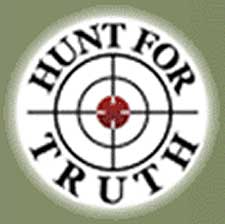California’s Pet Condors, Once Kings of the Air Now Dependent on Handouts
By Dave Halbrook


California –-(Ammoland.com)- Environmental scientists know that for a species being reintroduced into the wild to survive as a truly wild animal, at least three things are required:
- First, the animal must not be habituated to humans, or seek out human interaction;
- Second, the habitat must be able to support the species’ normal breeding and foraging activities without human assistance, and;
- Third, there must be a naturally re-occurring food source.
None of these conditions are met for the California condors (“Condors”) that have been reintroduced into the wild. Instead, we have created human built and stocked feeding-stations with an unlimited and constant food source, where Condors can leisurely feed without fear of competition or predation.
You can try to watch the condors dine on the new Condor-cam at www.ventanaws.org/condor_cam/.
Curiously, since the Hunt for Truth Association used this camera feed to expose the falsity of Ventura Wildlife Society’s claim that the Condors are now foraging for themselves, the Condor buffet table has been moved slightly. The actual feeding station is now mostly out of sight of the camera, but feeding continues there.
The California Condor is a vulture that once dominated the western skies but their population steadily declined during the 20th century. The Condor’s troubles began over ten thousand years ago when “megafauna” mammals such as mastodon, mammoth and sloth, were lost as a food source. For a while, condor flocks could still survive in large numbers by eating whale and seal carcasses. But in the 1800’s commercial whaling and seal hunting made this food source scarce too, and from this time on the Condor population would never again be able to sustain their pre-colonial numbers. Many other factors further exacerbated the Condor’s decline after that and by 1967 the Condor population was estimated at just 40 individuals. By 1982 only twenty-two California Condors survived in the wild.
The California Condor Recovery Program was started in 1975. In the mid 1980s, all of the existing Condors were taken into captivity. Efforts to reintroduce the Condors into the “wild” began in 1992. As of May 2013, there are approximately 435 Condors in the world, about 237 of which are free flying in California, Arizona, Utah and Baja California, Mexico. The rest still live in captivity.
Because Condors do not have an effective sense of smell they locate food by sight, either by directly observing a carcass from the air, or by observing other scavengers feeding on a carcass. Their natural wild behavior is to take to the air at mid-day, when the thermal air currents are strong enough to carry the large birds long distances, to look for the now rare large mammal carcasses that previously sustained wild Condor flocks. Large carcasses have always been required to sustain more Condors, because small carcasses are either immediately devoured, carried away by other scavengers, or are out of the Condor’s sight. Historically, condors competed with other scavenging animals and had to wait their turn until birds, coyotes, and the other scavengers had their fill. Additionally, Condors feed in wide open spaces so they can avoid encounters with predators, because it takes a condor some time to take flight to get away.
Most modern Condors were hand raised in large enclosures by humans. This human hand rearing, which is similar to the way trained falcons and parrots are raised, creates a lifelong bond with, and dependency on, humans. Today Condors in the wild are fed at designated feeding stations. Each carefully groomed proffered feeding site is surrounded by a fence to provide an early warning if a predator is approaching. Inside the fence a calf carcass is chained to the ground to prevent large predators from dragging the carcass away. The feeding sites are constantly supplied with fresh carcasses, so Condors no longer need to soar for hours looking down for their food on the ground.
Human caretakers supply a “free buffet” lunch at the designated feeding stations. Condors can dine at their leisure.
They also stay close to the feeding sites. GPS data of tagged Condors confirms that Condors fly back and forth between feeding sites, and very often roost in areas that are nearby to these known food sources. Because of proffered feeding stations, their current range is far less than their historic range. On a typical day California’s pampered Condors wake from their roosts at first light and seek the easy food. In fact, the Condors typically roost in the closest tall trees next to the feeding sites so they can basically roll out of bed to be served breakfast.
A wild vulture would have to wait several hours — until the late morning thermals are strong enough to take them aloft in search for food. No wonder many Condors spend over 90% of their time at these human-tended fast food diners.
So ironically, the Condor feeding program prevents these once wild birds from demonstrating normal wild behaviors, while it keeps numerous wildlife biologists employed.
So is the California Condor truly wild? Or is the entire expensive California Condor Recovery Program set up to care for what has become an expensive pet, kept in a barless outdoor zoo and cared for by humans under what is now in effect, Wildlife Biologists’ Full Employment Act?
David Halbrook is the Executive Director of the non-profit Hunt For Truth Association, an independent association composed of stakeholder groups and interested individuals that support the rights of hunters and the successful natural resource conservation efforts that are funded mostly by hunting license fees. He is formerly the Regional Director with the National Wild Turkey Federation, and is also a Hunter Education Instructor for the California Department of Fish and Game for the last 8 years.
